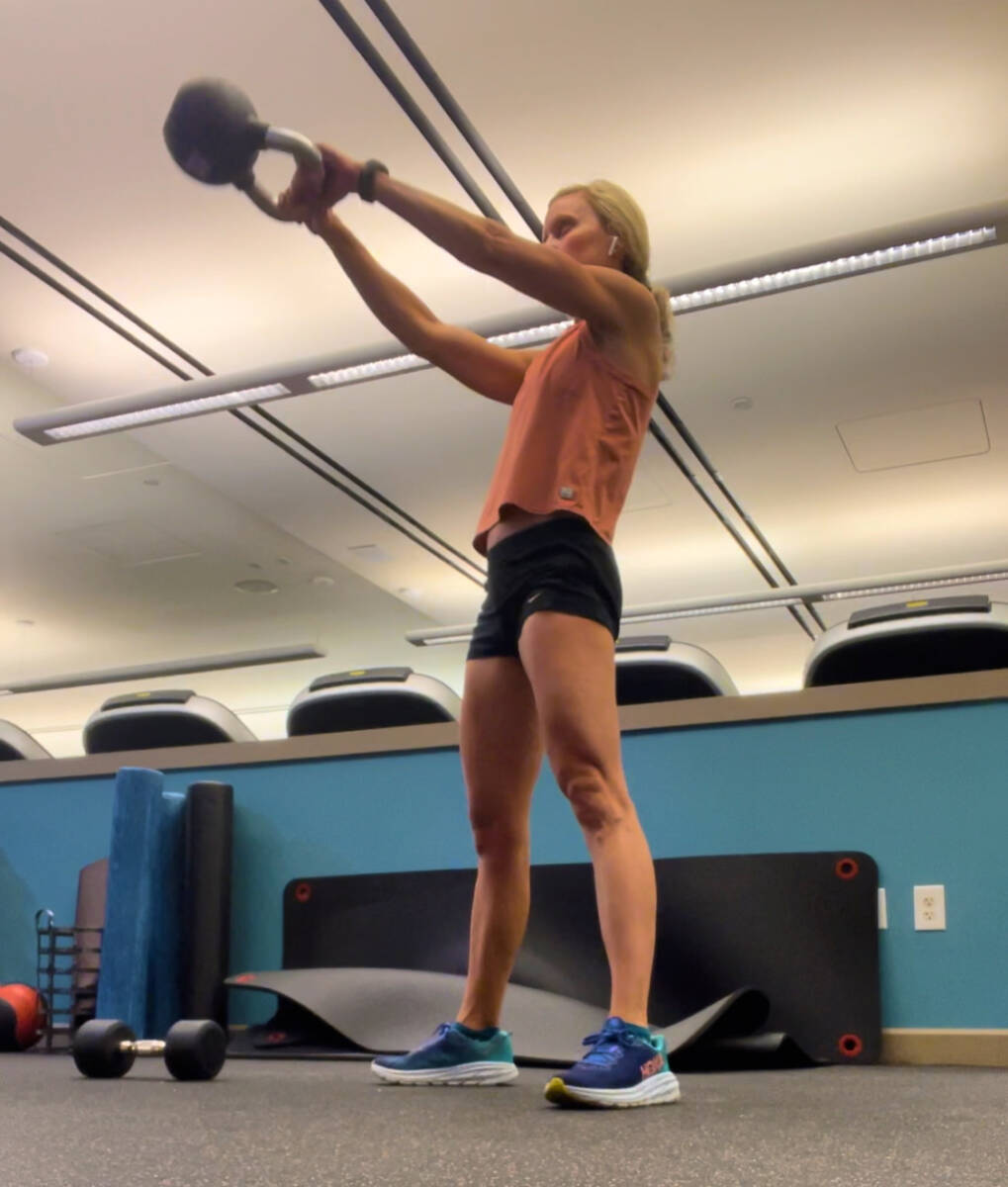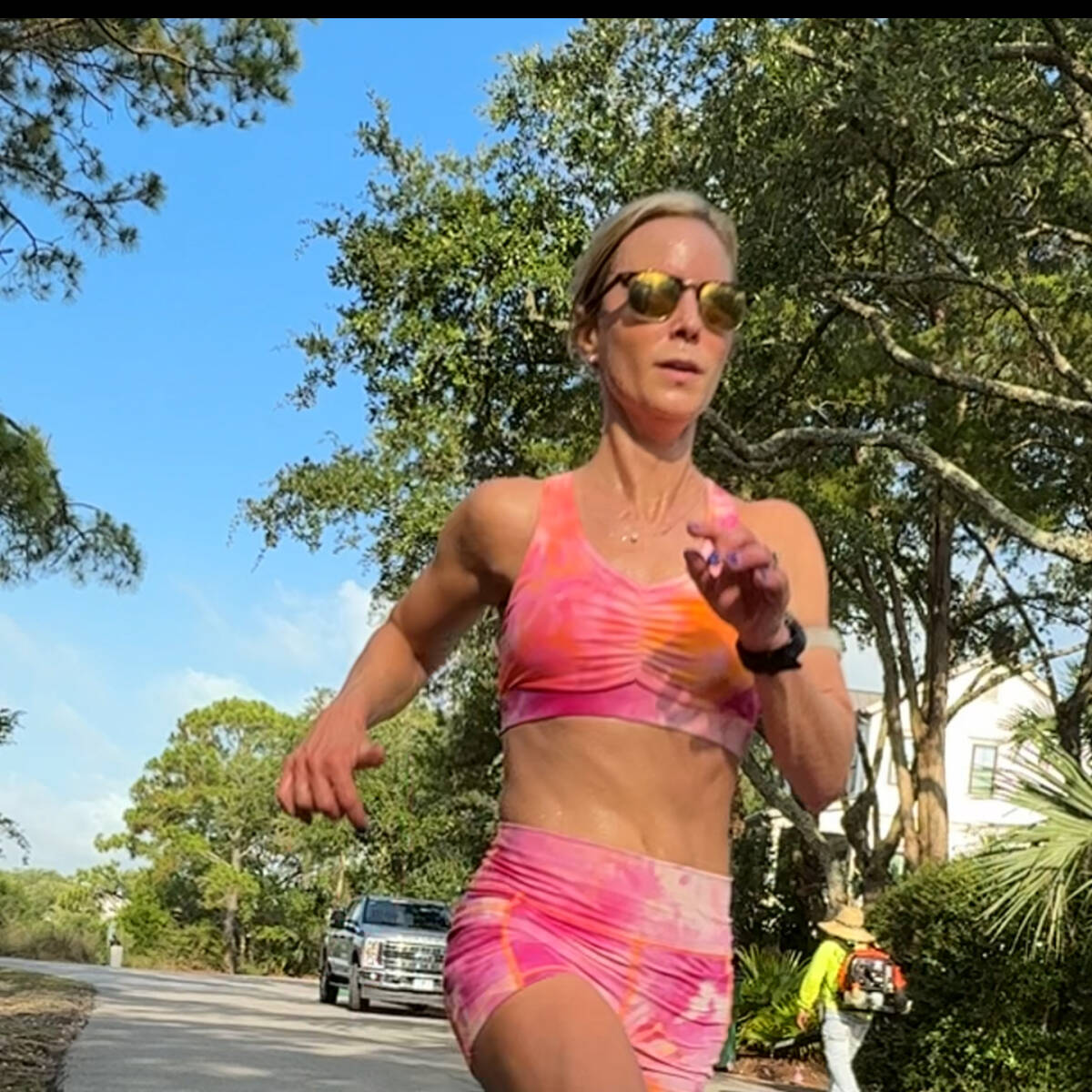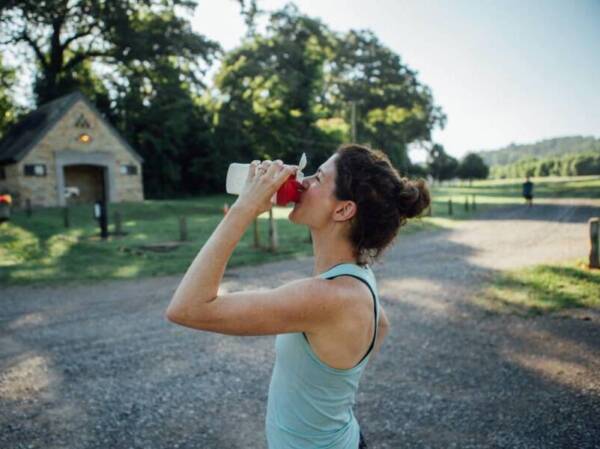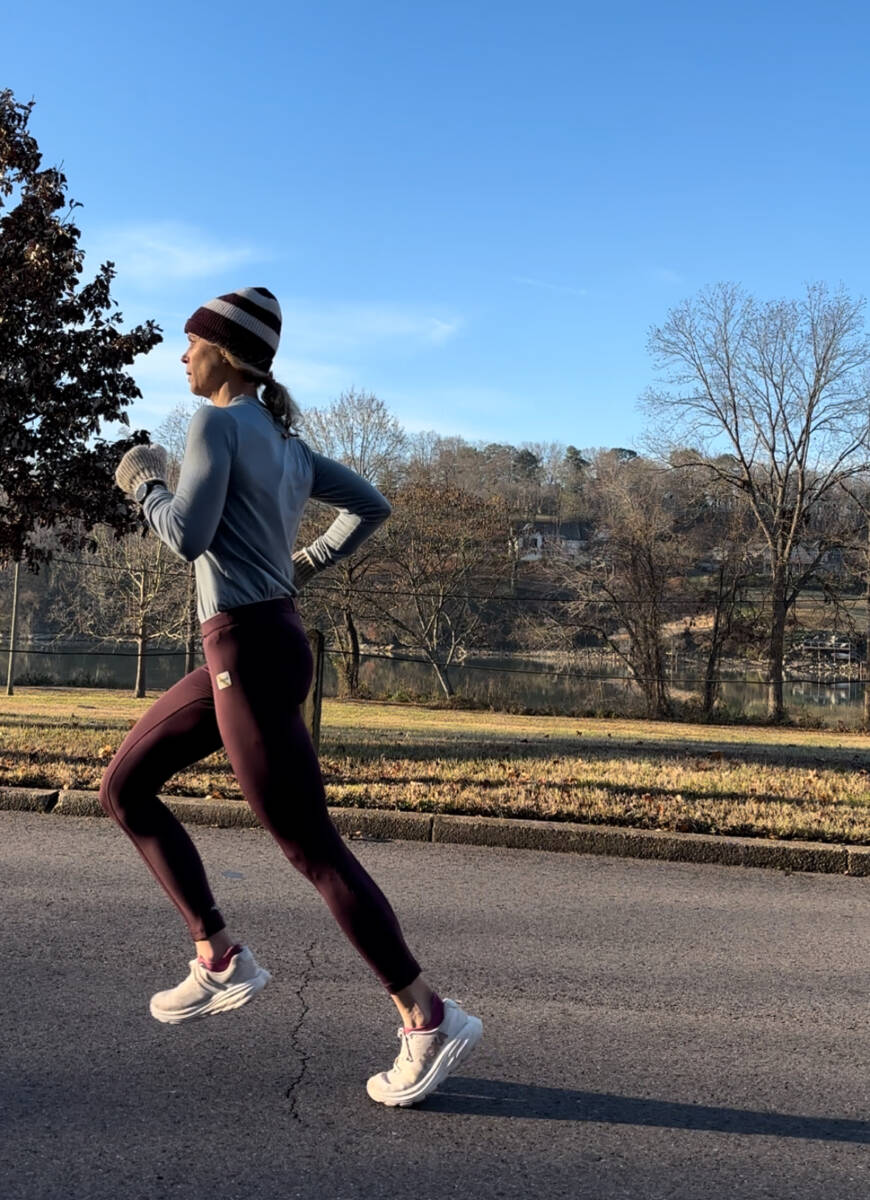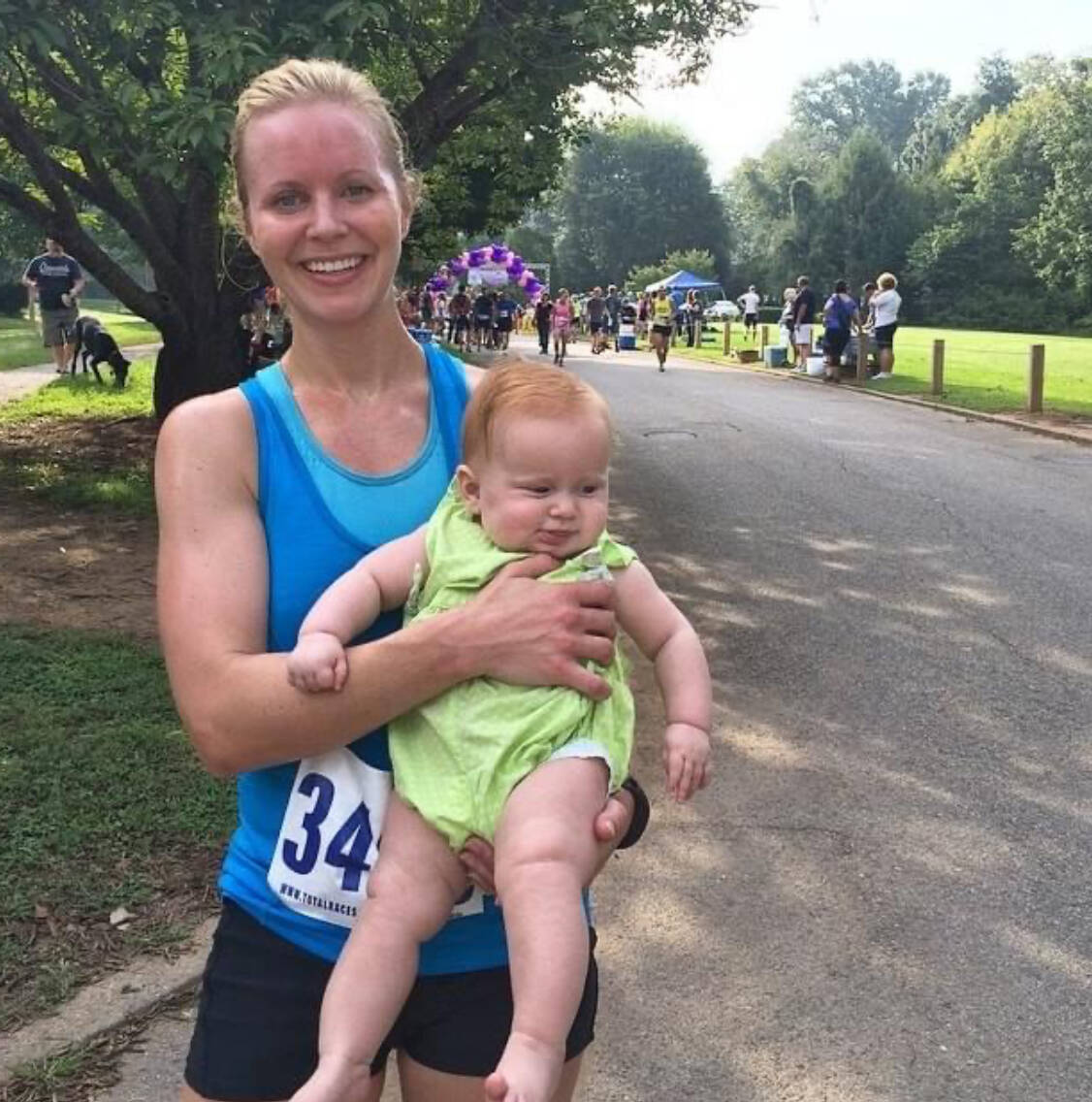What to Do After a Run for Better Recovery
Planning what to do after a run is crucial for your recovery. Prioritizing getting in good hydration, and nutrition, and taking 5 minutes to stretch and foam roll will allow you to recover faster so you can train harder. Keep reading for 7 game-changing recovery hacks backed by science.
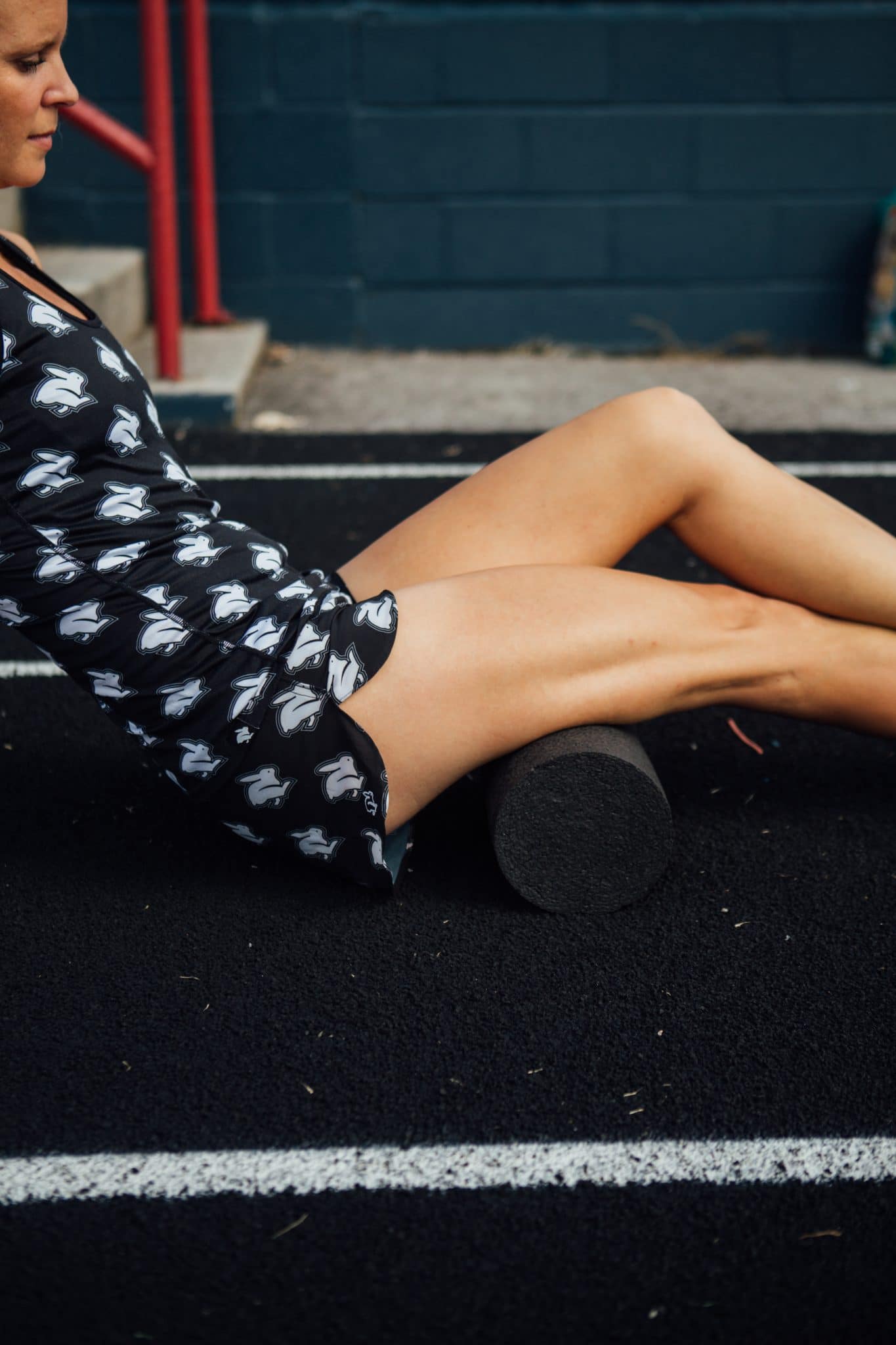
What you do immediately after running can have an immense impact on how you recover. I learned this the hard way. When I was a new mom, I barely had time to run. When I got home from a long run, I went quickly into mom mode and neglected to refuel, hydrate, or do any sort of cool-down.
Jump Ahead:
I couldn’t figure out why I felt so bad even two days later. The people I ran with seemed to feel fine and ready to do a speed workout two days after their long runs, but my legs felt so heavy.
I soon realized that neglecting to take care of myself and my body after running was seriously hampering my recovery. I then made it my mission to learn how to recover better and faster after running.
Recovering well after running is so important because your training can only be as good as your recovery. If your legs feel dead and you feel fatigued, you won’t be able to run as fast, far, or hard. You also set yourself up for getting injured or sick. I am sharing 7 tried and true methods of what to do after running to amplify your recovery. If you’re wondering–after running what to do?—these hacks are science-backed and game-changing.
7 Ways to Recover Faster After a Run.
Hydrate.
You may know about the importance of hydrating before and during your run, especially your long run. But often runners overlook re-hydrating after their run. This is a big mistake. Hydration in the form of both fluids and electrolytes is crucial for muscle recovery.
Fluids help the blood move more freely through the body delivering nutrients and oxygen the body needs for muscle repair. Electrolytes, on the other hand, are like traffic directors, telling the fluid where to go in the cells.
Weigh yourself before your run. When you’re done with your run, weigh yourself again and drink the amount of whatever weight you lost. So you if you lost 2 pounds, aim to drink about 32 ounces of fluids.
If you aren’t able to weigh yourself, aim to drink 16-24 ounces of a sports drink at least in an hour or two after your run. (Generally, you want to include about 400 mg of sodium pre-run, during each hour of running, and post-run.)
Check out my Complete Hydration Guide for Runners.
Eat well.
Getting in both carbohydrates and protein within an hour of finishing your run is a game-changer for your recovery. Carbohydrates help replenish your fuel source (glycogen) while also helping you hold onto fluids. Having carbs will help you feel less fatigued and bounce back faster for your next run. Aim for 1.2g of carbs per pound of body weight.
Protein helps repair damaged muscles. You’ll want about 20-30 grams of protein after your run. You’ll want to eat a 3:1 or 4:1 carb-to-protein ratio after your long run. This is roughly about 75-100 grams of carbs and at least 25 grams of protein depending on variables such as your size, pace, distance, and weather for example.
Aim to include anti-inflammatory foods like berries, tart cherry juice, and nuts in the days following your long run to help tame inflammation and delayed onset muscle soreness aka DOMS. Avoid sugary foods! Get my 5 tips for what to eat after a long run.
Stretch and/or foam roll.
The name of the game for speeding up recovery is increasing blood flow. So pretty much anything that can increase blood flow can help your legs bounce back. This includes both stretching and foam rolling.
Static stretching where you hold the poses for 15 seconds or more may increase blood flow in your legs to speed up recovery, help work out kinks, and improve range of motion (crucial for running). Research is mixed on the effectiveness of this but many runners (myself included, say that stretching makes them feel better).
You want to do static stretching AFTER your run not before. (Before running, perform dynamic stretching to improve range of motion. )
Foam rolling is a type of self-massage that helps release your myofascial tissues and muscles. Myofascial tissues are tough membranes that wrap, connect, and support your muscles. Running can make these tissues stiff or stick to the muscles causing muscle soreness and discomfort. Aim to foam roll each major muscle group for about 2 minutes post-run.
Wear recovery shoes.
I don’t love that I tore my plantar fascia, but I am grateful that injury led me to the recovery shoes Oofos. Now, I barely wear anything else when not running. It took that injury to move past the aesthetics and focus on the function which is serious recovery.
Research shows that fatigue is reduced and runners experience faster recovery when they wear a good recovery shoe like Oofos. I recommend all the athletes I coach get a pair and wear them as often as they can. You can also wear an old pair of running shoes but the foam and fit of most recovery shoes are meant to massage your feet and take the load off your legs. Here’s my full review of recovery shoes.
Try recovery tools.
There is a plethora of recovery tools for runners out there. As a running blogger, I am allowed to try most of them for free. I can tell you that many of them sound promising but have little effect. However, three recovery tools have made a noticeable difference in my recovery from running.
- Firefly Recovery: These are straps you put on under you knee that stimulate blood flow by 400 percent. What’s great is you can wear them around without having to be tethered to a plug. I rely on these in the heart of my marathon training. Read my full review here. Price: Starter pack $99
- Compression Boots: Compression boots are large boots you fit over your legs that essentially squeeze them like a blood pressure cuff. Studies show that compression boots have been shown to lessen pain by increasing clearance of blood lactate and circulation. They can be pricey but not all brands are. Bob & Brad Compression Boots Price: $89.99
- Massage Gun: Every mother runner likely wishes they could have a weekly massage but that’s not conducive to mom life. What is are massage guns. I actually keep one in my car and use it at stoplights. Massage guns perform a deep tissue massage to increase blood flow and relax tight muscles. They can also be pricey, but I scouted effective, inexpensive ones. Bob & Brad Massage Gun Price: $99
Take an epsom salt bath.
After my athletes’ long runs, I always encourage them to grab a book and read in an Epsom salt bath (if their kids will let them—though I am often joined by my kids! TMI?). Warm baths increase blood flow and Epsom salt (magnesium) battles inflammation and relaxes muscles.
My discovery of Epsom salt baths was another gift to me from another injury. I tore my hamstring more than a decade ago and my doctor recommended them. I quickly learned how much faster my body recovered by a 15-20 minute soak in this mineral water.
Ice baths also have purported benefits of increasing blood flow and recovery time, but I’m not a masochist so I’m not including them in this list…though I do use them from time to time.
Keep moving.
It may seem contradictory to stay active after a long run, race, or workout but doing light activity keeps—you guessed it—that blood flowing, supplying oxygen and nutrients to those damaged muscle fibers.
On their rest days, I advise my athletes to go for a gentle walk or cross-training to keep legs loose. I also tell them to keep walking after a marathon. This helps your muscles not get tight and sore.
The good news is the chances that mother runners will lay on the couch all day after a long run are pretty slim. In this regard, mom life may actually help your recovery because we are almost always on the go!
You don’t have to do all the tips after a run to recovery: if you eat, drink, and keep moving, you are in good shape! The other tips will optimize your recovery. I suggest prioritizing them after big runs if you are short on time. A tiny bit of planning on what to do after a run will go a long way when you have run a long way!
What does your post-run recovery look like?

